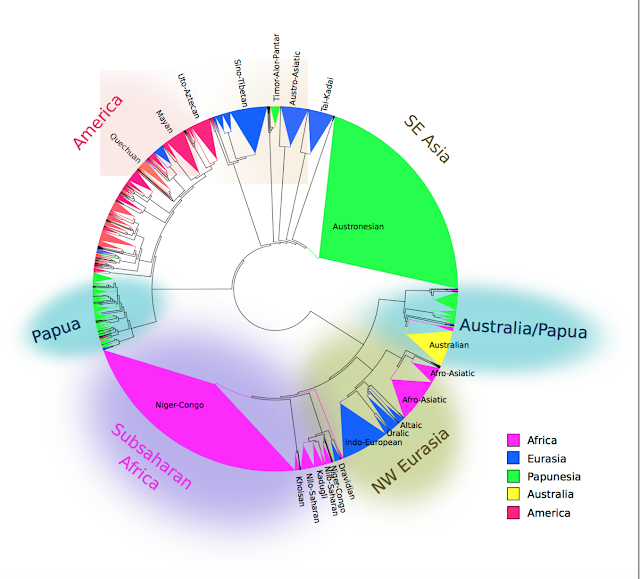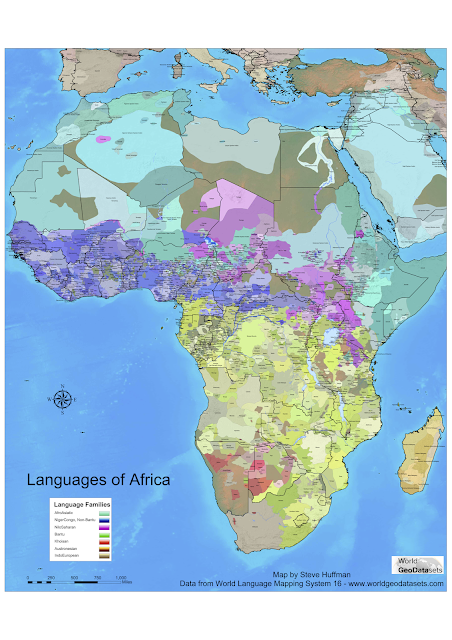X-rays of vocal tracts
Dear everyone,
The vocal track is a fabulous thing, and most of it is hidden from our eyes. That's why x-rays are so awesome. In this post, we're going to look at the vocal track in profile through x-rays. It's not about grammar, but it is entertaining and educational.
This here are 3 gifs of people using their vocal tract. These images are from Christine Ericsdotter's research (Ericsdotter 1999, Stark et al 1999).
The vocal track is a fabulous thing, and most of it is hidden from our eyes. That's why x-rays are so awesome. In this post, we're going to look at the vocal track in profile through x-rays. It's not about grammar, but it is entertaining and educational.
This here are 3 gifs of people using their vocal tract. These images are from Christine Ericsdotter's research (Ericsdotter 1999, Stark et al 1999).
 |
| Female subject saying swedish ''både'' (eng: both) Pictures from Christine Ericsdotter's website |
 |
| Female subject exploring her vocal tract Pictures from Christine Ericsdotter's website |
 |
| Male subject saying swedish ''pion''[piun] Pictures from Christine Ericsdotter's website |
The study behind the images above
Christine and many others from the phonetics section of the department of linguistics at Stockholm university have been involved in a study that took place at the Danderyd hospital. They did x-rays of people when the spoke. The aim was to learn more about dental and retroflexive stops (different types of consonants) and their variation in different vowel contexts.
The subjects were subjected to as little radiation as possible, all appropriate safety requirements were met. The radiation dose was smaller than that of a typical visit to the dentist.
The vocal tract
Here is a more detailed diagram of the vocal tract with labels.
Christine and many others from the phonetics section of the department of linguistics at Stockholm university have been involved in a study that took place at the Danderyd hospital. They did x-rays of people when the spoke. The aim was to learn more about dental and retroflexive stops (different types of consonants) and their variation in different vowel contexts.
The subjects were subjected to as little radiation as possible, all appropriate safety requirements were met. The radiation dose was smaller than that of a typical visit to the dentist.
The vocal tract
Here is a more detailed diagram of the vocal tract with labels.
Vowel chart
The standard way of representing vowels is through a chart like so:
The vowel chart is meant to be used as a representation of how phonetic symbols representing vowels relate to each other. The vowel chart actually maps onto the vowel tract, like so:
The standard way of representing vowels is through a chart like so:
The vowel chart is meant to be used as a representation of how phonetic symbols representing vowels relate to each other. The vowel chart actually maps onto the vowel tract, like so:
 |
| Vowel chart and it's relation to the vocal tract. Cred: Mikael Parkvall |
One of the things Christine taught me
Christine Ericsdotter was my tutor in phonetics, and she taught me a little phrase in Swedish that can help one remember how the four front unrounded vowels and the four back rounded are pronounced: "vi ber fem man dra bort vårt bord"
Award-nominated x-ray video
The Max Planck society recently released an x-ray video of a man speaking german that's doing the rounds on social media and being nominated for awards. Have a look at it here.
EDIT: The video from the MPG by Jens Frahm is MRT, not x-rays.
Trumpet blowing in x-ray!
For funsies, here is some trumpet blowing x-rays. Compare it to the vowel chart for maximal education.
That's it, we were just doing some vowel tract ogling. I hope you enjoyed it!
Over and out
Ericsdotter, C. (1999): Modeling lingual coarticulation in coronal stops. Master Thesis in Phonetics, Department of Linguistics, Stockholm University & Department of Speech, Music and Hearing, Royal Institute of Technology, Stockholm, Spring 1999.
Stark, Ericsdotter, Branderud, Sundberg, Lundberg & Lander (1999) The Apex Model As A Tool In The Specification Of Speakerspecific Articulatory Behavior. PDF:
https://www.researchgate.net/publication/2359061_The_Apex_Model_As_A_Tool_In_The_Specification_Of_Speakerspecific_Articulatory_Behavior?ev=auth_pub






The MaxPlanck thing are NOT x-rays, that's the crucial point! It's high-resolution, real time MRT, not dangerous radiation like x-rays!
ReplyDeleteThanks, edited.
Delete